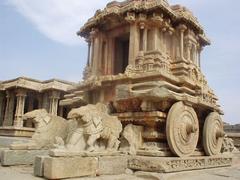 The World Monuments Foundation (WMF) is the leading private organization dedicated to saving the worlds most treasured places. Since 1965–in more than 90 countries–WMF experts have been racing against time, applying proven techniques to preserve important architectural and cultural heritage sites around the globe.
The World Monuments Foundation (WMF) is the leading private organization dedicated to saving the worlds most treasured places. Since 1965–in more than 90 countries–WMF experts have been racing against time, applying proven techniques to preserve important architectural and cultural heritage sites around the globe.The 2010 watch list for India has five monuments and is listed below.
1) Chiktan Castle
2) Dechen Namgyal Gonpa
3) Historic Civic Center of Shimla:
4) Kothi, Qila Mahmudabad:
Of the four, though there are monuments from other notable religions, is no Hindu monument worth preservation in the eyes of WMF? What about the Hampi caves or the Jogeshwari caves which are in a state of neglect? What about hundreds of monuments in Orissa? What about the Ram Sethu? No one seeing any value and greatness in them? The Jogeshwari caves are beneath a slum in Mumbai crying for attention.
Yo, Hindu Monuments, you have done the biggest mistake of your life by being Hindu in this secular nation and secular world!
